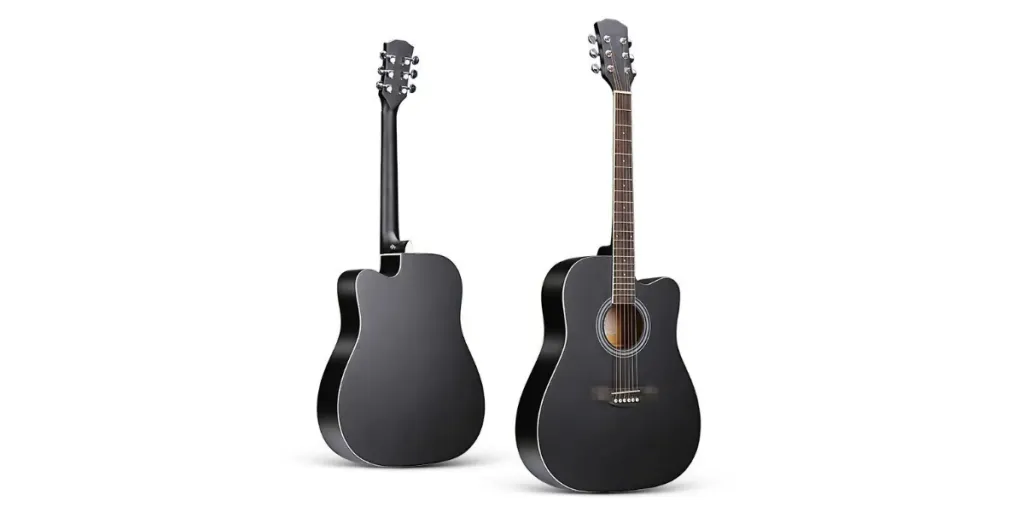Acoustic guitars’ timeless resonance, versatile tonal qualities, and ability to intimately connect musicians with their audience has ensured they remain a cherished and popular instrument. However, navigating the market to find the ideal acoustic guitars to stock can be challenging, with countless manufacturers offering a dizzying array of options.
Finding the best models can feel overwhelming amid this musical symphony of choices. That’s why we’ve written this ultimate acoustic guitar buying guide, providing pointers and insights into the intricacies of these beautiful instruments.
Table of Contents
An overview of acoustic guitars
The acoustic guitar market in 2023
Types of acoustic guitars
The ultimate acoustic guitar buying guide
Summary
An overview of acoustic guitars
Acoustic guitars are beautiful musical instruments cherished for their simplicity and the rich, resonant melodies that they can create. Crafted with hollow wooden bodies and a soundhole, these guitars produce captivating sounds by plucking their steel or nylon strings. Their unamplified, pure, and organic tones make them a beloved choice across a diverse range of musical genres.
Coming in various shapes and sizes, with each offering its distinct tonal character, acoustic guitars are often favored for solo performances or as accompaniments in various musical styles.
The acoustic guitar market in 2023
In 2021, the worldwide market for acoustic guitars was valued at US $297.55 million, according to Business Research Insights, and is expected to grow to approximately US $411.45 million by 2027, demonstrating a steady compound annual growth rate of 5.55% throughout the forecast period.
Several significant factors are fueling the heightened demand for these instruments. First and foremost, the enduring appeal of acoustic guitars, known for their versatility across various music genres, continues to attract musicians of all kinds, expanding the customer base.
Moreover, an increasing interest in music education and creative self-expression has led to a surge in beginners and budding musicians to seek out acoustic guitars. Additionally, the trend towards unplugged and intimate acoustic performances in live and recorded music has boosted the demand for these instruments.
Regions with the highest demand include North America, especially the United States, which remains a prominent market due to the deep cultural significance of acoustic guitars. Europe, especially countries like the United Kingdom and Germany, also show a strong fondness for these instruments. Furthermore, emerging markets in Asia, such as China and India, have seen a surge in demand owing to their growing music industries and an increasing appreciation for acoustic musical landscapes.
Types of acoustic guitars
Dreadnought

According to Google Ads, there are approximately 1,600 monthly searches for dreadnought acoustic guitars, making it one of the most sought-out acoustic guitars. With its large and square-shouldered body, the dreadnought guitar packs a punch in terms of sound, making it a favorite for folk, country, and rock players. Increased volume and projection make it ideal for both solo performances and in group settings.
Parlor
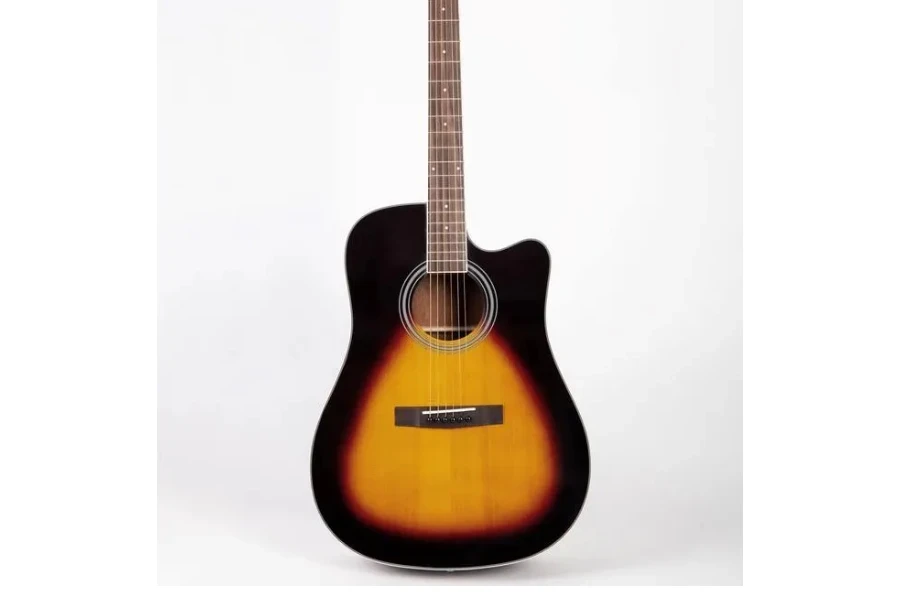
Parlor guitars, known for their smaller and more compact size, exude vintage charm. Despite their diminutive stature, they produce warm, intimate tones that uniquely lend to fingerstyle playing and acoustic blues. With more than 2,400 monthly searches on Google Ads, parlor acoustic guitars have proven a popular choice for musicians seeking a cozy, old-school vibe.
Concert
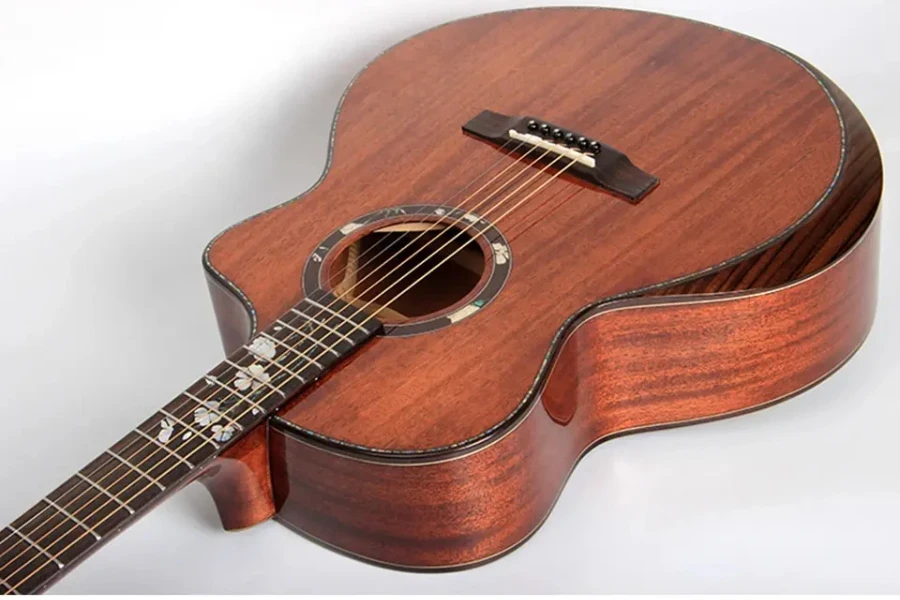
Falling between the dreadnought and parlor in size, concert guitars offer a versatile playing experience. According to Google Ads, concert acoustic guitars average around 880 monthly searches. They are prized for their comfortable playability and balanced tonal qualities. Whether you’re into fingerpicking, strumming, or a mix of both, the concert guitar adapts easily to various musical styles, making it a popular choice among many players.
Jumbo
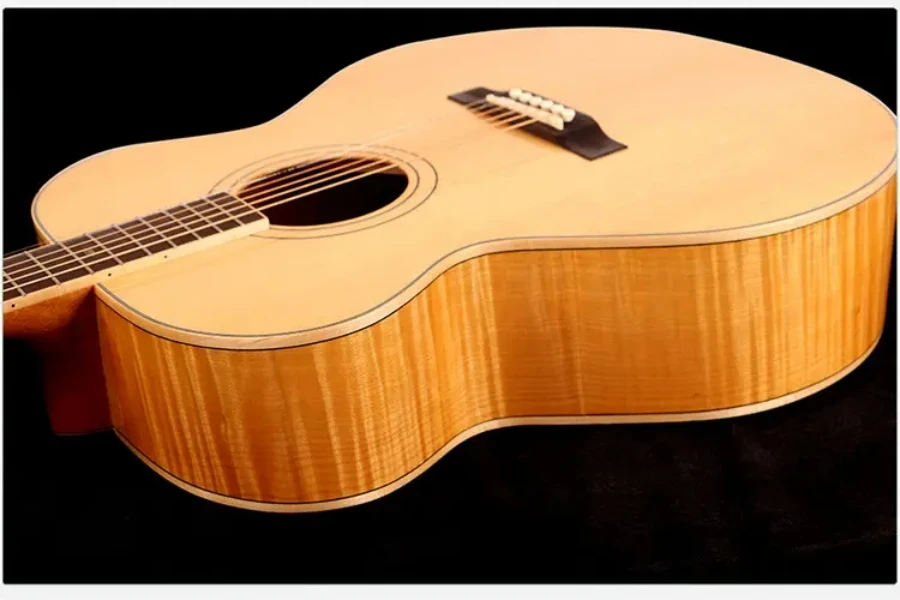
Jumbo guitars certainly earn their name with their generously proportioned, rounded bodies. They’re all about delivering sheer power and impressive sound projection. These guitars average around 90 monthly searches, likely from musicians seeking a bold, resonant sound that can fill sizable venues or accommodate vigorous strumming styles.
Classical
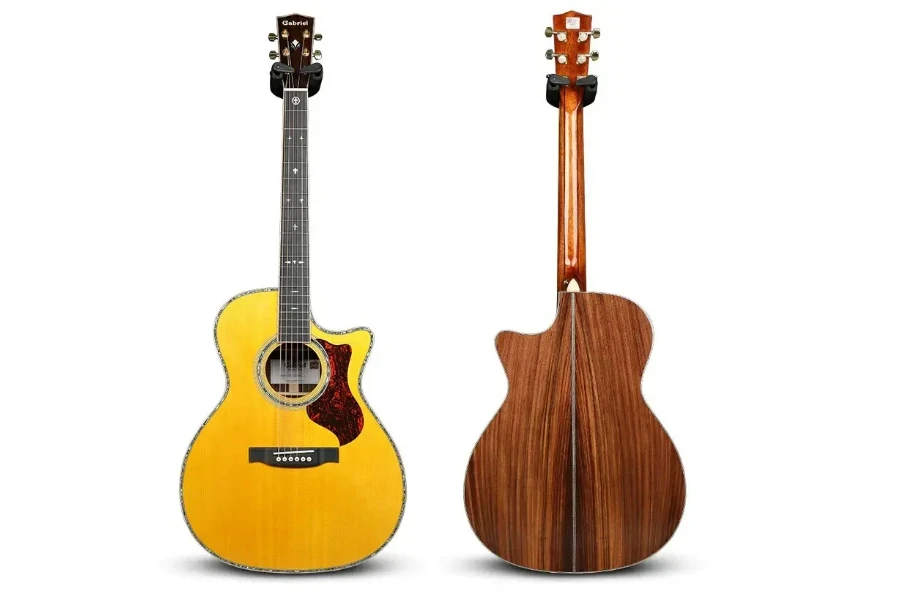
Classical guitars have nylon strings, wider necks, and traditional designs. While they’re designed specifically to play classical music, their mellower and more delicate tones also find favor in other genres, such as flamenco and bossa nova. The classical guitar’s unique timbre adds an expressive touch to various musical compositions. According to Google Ads, these guitars average 480 monthly searches.
Resonator
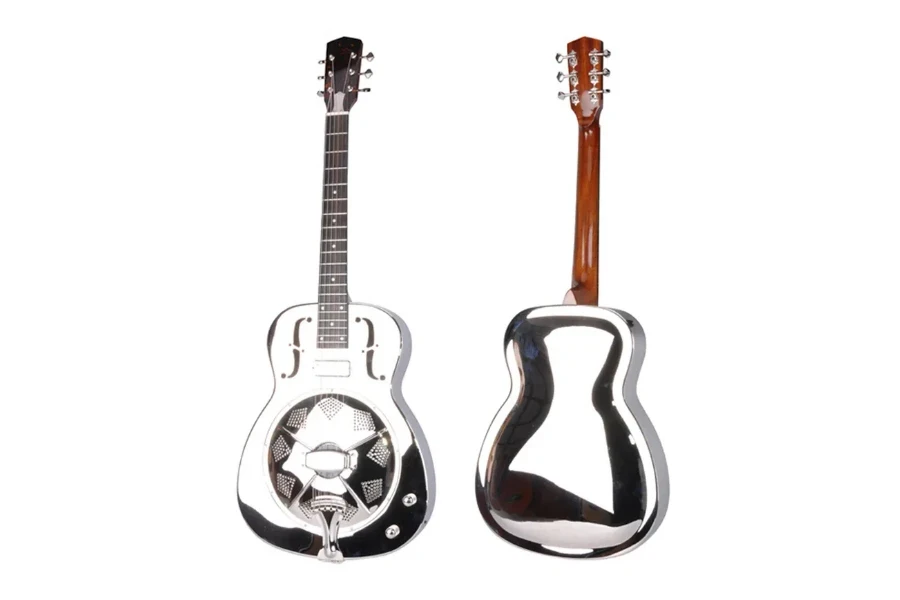
Resonator guitars feature a metal cone or resonator plate built into their bodies, creating a distinctive, twangy, metallic sound. Resonator acoustic guitars receive an average 590 monthly searches, according to Google Ads. They are a favorite among blues, bluegrass, and slide guitar enthusiasts. Resonator guitars offer a vintage Americana feel and are perfect for achieving a vintage, twangy sound.
The ultimate acoustic guitar buying guide
Price
Acoustic guitars span a range of prices, from around US $200 for entry-level models to over US $5,000 for high-end instruments. Your budget is your compass, helping you to navigate this diverse market. However, it’s essential to understand the factors that influence the price of an acoustic guitar.
Craftsmanship plays a significant role, with high-end guitars often boasting meticulous attention to detail, premium materials, and superior build quality. These aspects enhance playability, longevity, and provide a richer, resonant tone.
Body type
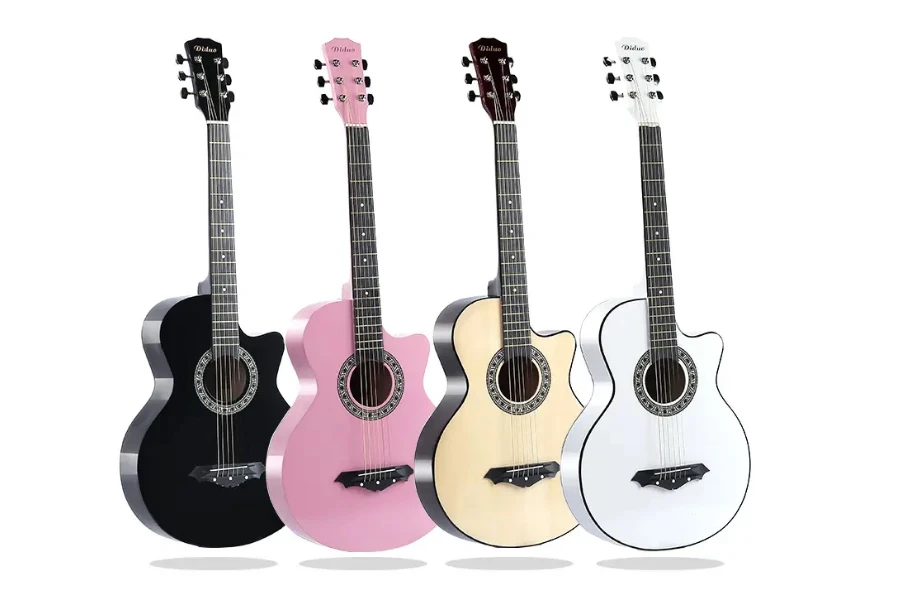
As we touched on above, the shape of a guitar’s body plays a pivotal role in shaping both its sound and the overall playing experience. For example, the dreadnought has a bold and commanding projection, while parlor guitars exude an intimate and vintage charm with their compact size.
These differences mean you’ll want to research what types of guitar your consumers will likely want. This can be dictated by anything from their budget to where they’re looking to sell.
Tonewood
The choice of wood for an acoustic guitar’s top (soundboard), back, and sides determines its tonal qualities. Various kinds of wood, including spruce, mahogany, and rosewood, impart distinct sonic characteristics to the instrument.
For instance, the soundboard plays a pivotal role in defining its tonal qualities. Here, spruce is often favored for its bright and clear tones, making it ideal for fingerstyle playing, while cedar, with its warmth and responsiveness, offers a mellower and more expressive sound.
Moving to the back and sides, rosewood contributes deep bass and shimmering treble, adding complexity to the guitar’s sound, while mahogany brings a warm and balanced tone that suits blues and folk music.
The choice of wood at the neck affects the playability and stability of the guitar. Mahogany and maple are common here, with mahogany providing a comfortable feel and maple offering stiffness and a brighter tone.
The materials used for the fingerboard and bridge also influence the overall playability, with rosewood adding warmth and ebony, providing a clear, bright tone. Lastly, the nut and saddle materials, such as bone or synthetic TUSQ, impact intonation and sustain, affecting tuning stability and note clarity.
4. Scale length
The scale length of an acoustic guitar is a pivotal factor in how comfortable it feels to play. Acoustic guitars typically have scale lengths that range from approximately 24 to 26 inches long. Beginners and fingerstyle players often favor a shorter scale because it allows for easier fret access and less string tension, making it a gentler option for fingers.
On the other hand, longer scale lengths are well-suited for strumming and lead playing, as they can provide a bit more string tension and clarity. The key is to find a scale length that aligns with hand size and playing style, ensuring a harmonious connection between the player and their guitar.
Playability
The tactile experience of holding a guitar is paramount to an enjoyable playable experience. Two vital elements that contribute to this experience are the neck profile, the shape of the back of the neck, and action, how high the strings are from the fretboard. A suitable neck profile ensures that the hand comfortably wraps around the neck, while a well-adjusted action determines how effortlessly you can press down on the strings.
Setup and quality control
The ideal guitar is characterized by accurate intonation, flawlessly executed fretwork, and a precisely adjusted neck. The guitar’s exterior should also be defect or imperfection-free. In addition, it’s advisable to seek information about the manufacturer’s quality control processes to help ensure confidence in your investment.
Summary
Searching for the ideal acoustic guitar in 2023 involves carefully assessing factors like budget, body type, tonewood, scale length, playability, and quality control. These elements ensure your chosen instrument aligns seamlessly with your business needs. If you’re in the market for quality guitars, head to Alibaba.com to browse an extensive range of models and accessories from reputable suppliers.
